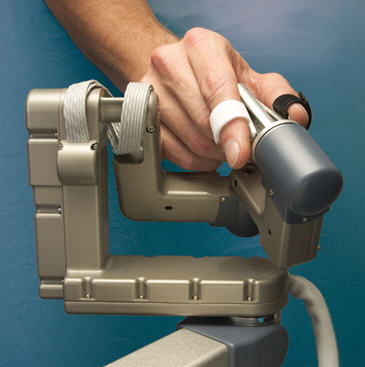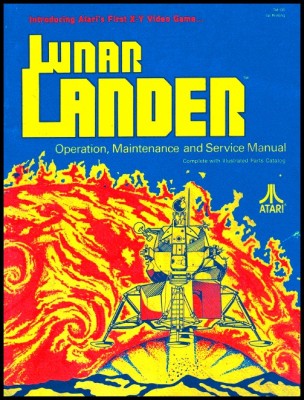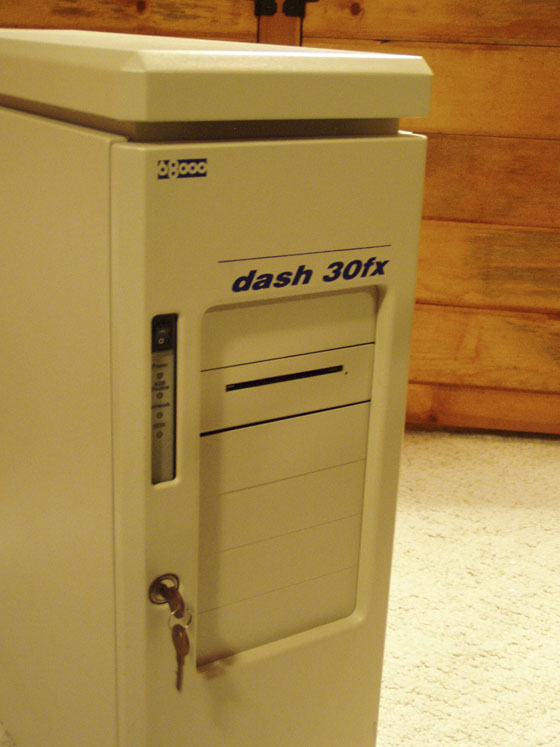That right there is a load of $20 words, but it’s just a fancy way of saying “cutting a chunk out of the kidney without the doctor having to stick his hands in in your side.” It also describes some pretty cool technology, and it’s what they call the procedure that I’ll be going through tomorrow. But before I get into that, a quick (and belated) update on what’s happened since my last post is in order…
I checked in at the Sanford Surgical Tower (no idea why it’s called a tower; it’s not) on October 22 for the biopsy on my kidney tumor, and the procedure went very smoothly. The results came in two days later; the tumor is just a run-of-the-mill renal cell carcinoma, and can be removed surgically. That was a big relief; the thought of another round of chemo and radiation was more than I wanted to think about. I could handle it, with God’s help and that of great friends & family and an even greater wife, but if I had my druthers… Nope. I did a happy dance when I got the news!
So with that news in my back pocket, we met with the surgeon, Dr. Ahrend, a few weeks ago to discuss the next step; surgery. The urologist I spoke with first, Dr. Hofer, said that I was a good candidate for robotic laparoscopic surgery instead of “open surgery”; open surgery for a nephrectomy, partial or full, involves an incision that follows the bottom of the ribcage from the chest around to the back, half way around the torso. That was the way they did things in the days before laparoscopy, and what they still do with some patients that don’t meet the physical requirements for a laparoscopic procedure. The surgeon needs full access to the kidney, and that just isn’t possible without a huge entry point like that. The beauty of laparoscopy, and robotic laparoscopy in particular, is that the surgeon can get that full access to the organ without having to make an incision big enough to see through and to get a pair of big mitts into. Laparoscopy lets the doc manipulate tools inside the patient while watching what’s going on by way of a video feed a pair of miniature cameras. Adding the robotic angle to it makes it almost like climbing right inside…
Dr. Ahrend is a pretty young guy (as can be seen in this KELO news bit) but he is also the best guy in the business in Sioux Falls. He’s done over 700 robotic procedures since residency, and makes it sound like mine will be somewhat routine. While chatting with him at the end of our appointment, he commented that he likes to tell his mom, “all those video games are finally paying off,” and that is a good (but not great) description of how he does the laparoscopic nephrectomy with the assistance of a pair of robotic “hands.”
The “robotic” part is a little misleading though; that term has connotations of the process happening somewhat autonomously, and this machine is anything but automatic. It’s more of a bionic surgery by remote control. The history of the procedure is pretty cool; I’m told it originated with the military, with the idea that a patient who was wounded on the front line could be operated on without having to be transported far, and the surgeon could work from a safe place far from the front line. So far it hasn’t been used in that capacity, but there has been at least one procedure done over a long distance; the surgeon was in New York and the patient in Strasbourg, Germany. The big problem that can keep something like that is latency, the amount of time it takes for a signal to get from the controller to the robotics and the return trip for whatever kind of feedback signal is used. Apparently it was acceptable in this experiment, and in a normal procedure where the surgeon is in the same room as the patient, it’s seldom a problem, but that’s the sort of thing that would keep a networking guy up all night.
When doing a robotic procedure like this, the surgeon has a stereoscopic view of things through a video feed from a pair of cameras that are inserted into the area being worked on. The console that he works from has a pair of video monitors with a divider down the middle to give the surgeon a 3-dimensional view of what’s going on inside; depth perception in the surgical site is crucial.

The tools that are used are remotely manipulated by the surgeon using specialized controllers in the console; much more sophisticated than any joystick or video game controller, because what’s being controlled is much more sophisticated than anything in any shoot-em-up/crash-em-up video game. And the stakes are much, much higher than any video game.

Notice the scale of the little scissor tool in the hand of the model, then watch the video below; the surgeon’s hand movements are scaled down while his view of the surgical site are magnified so that he has a better view of things and a higher degree of control over the tools he’s using.
This YouTube video is pretty fascinating to watch, as it gives a view of exactly what the surgeon sees through his live video feed, and lets you see the dexterity of the robotic tools. It’s especially interesting because the case is very similar to my own; a male patient in his 50’s with a 2 centimeter mass on the upper quadrant of the right kidney. The video is not for the faint of stomach, as you see all the blood and gore and cutting and yuck, but it’s very informative for the same reasons. You’ve been warned!
Watching the video doesn’t give one a very good idea of how things are arranged for the surgery and where on the body the incisions are made. I’m told they make five incisions for the tools to be inserted, and from the photos & videos I’ve seen they go in from all directions. It would be interesting to attend a robotic surgery while conscious to see exactly how it’s set up and done.
Another pretty cool tool that Dr. Ahrend will be using is Firefly Fluorescence Imaging technology. With Firefly, a dye is injected into the bloodstream during surgery, and when a black light is used to illuminate the surgical site, normal tissue will fluoresce bright green, while cancerous tissue appears dark. Under normal lighting conditions it’s difficult to tell the difference between normal and cancerous tissues; the contrast that results with the Firefly dye and black light helps the surgeon know with a higher degree of certainty that all of the cancerous tissue has been removed. They also use ultrasound to help delineate the boundaries of the tumor, but adding Firefly to the surgeon’s tool belt helps immensely in making sure they get all of the tumor the first time, and don’t remove any more kidney tissue than is absolotely necessary.
Here’s another video from the Shawnee Mission Medical Center that demonstrates the use of Firefly, and gives a great demonstration of what happens before the surgeon starts digging around inside, and a good view of some of the equipment used.
That brings us to today, the day before surgery. All in all, I’m pretty relaxed about the whole thing. It’s a little weird (scary weird) seeing all of that and knowing it’s what they’ll be doing to me tomorrow, but I’m ok with it. After all I’ve learned about the procedure, it’s easy to forget how new this whole robotic thing is, but the doctor’s confidence in it is pretty contagious. And knowing that I don’t have to deal with the aftermath of open surgery is huge!
My biggest comfort in all of this though is knowing how many people are praying for us. It’s really a humbling thing being on the receiving end of all that, but the prayers really do make a difference. I am extremely grateful for each and every person lifting us up, and for their concern for us. God is faithful, and I trust that he will see us through this. As for the recovery, I’m really looking forward to some time off; I’m taking two weeks of medical leave from work. It seems like such a long time since I’ve had any time off from work where I wasn’t busy ahead of time getting ready for going somewhere. This time I’ll just be at home, resting. For now though the waiting is the hardest part. Nothing like a bit of anxiety over the procedure, mixed with fasting from everything but clear liquids for the 24 hours leading up to it, plus an enema waiting for me tomorrow morning. It’s gonna be a Monday like no other.
I’m actually looking forward to getting this surgery done and out of the way. I may be speaking too soon, but I think the surgery and recovery will be a walk in the park compared to chemo and radiation. The thing I’m really looking forward to is hearing the news that I’m cancer-free. That will be worthy of a celebration!
Here are some other links that I found to be of interest when researching this topic. Again, many of them show actual surgical procedures, so click with caution.
Information on kidney cancer
News4 da Vinci partial nephrectomy with Firefly
HD Robotic Partial Nephrectomy using “Firefly” Fluorescence Technology
Firefly Fluorescence Robotic Surgery With da Vinci
Robotic Partial Nephrectomy performed by Vipul Patel, MD











